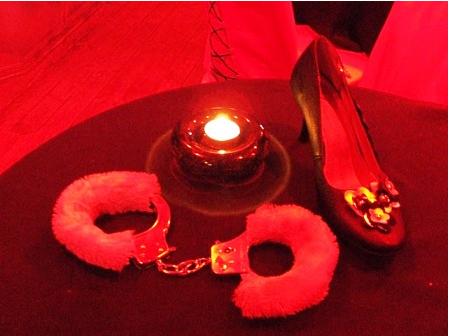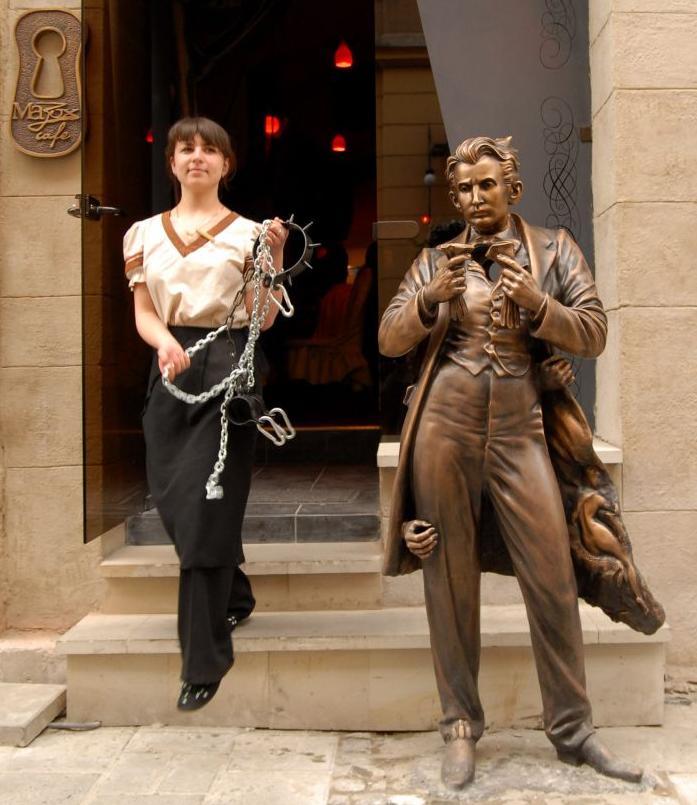Some writers have paradoxical fates in literature. A staunch republican, Niccolo Machiavelli described the principle of government division into branches long before John Locke. He treated Brutus as a hero of republican Rome and Caesar as a despot and betrayer of republican ideals whose death was well-deserved. Eventually, the name Machiavelli came to describe a doctrine that justifies any means to obtain undivided power. It was apparently much easier to read his scandalous The Prince than bother with the less sensational Discourses on the First Decade of Titus Livius.
A similar fate befell the once renowned Austro-Hungarian writer Leopold von Sacher-Masoch. In his lifetime, the president of the French Republic decorated him with the Legion of Honour for his literary activity. Today, the first thing an average reader thinks of when hearing his name is handcuffs, whips, latex costumes and other sex toys. Paradoxically, there is barely anything of the sort in Sacher-Masoch’s books. “If Leopold von Sacher-Masoch wanted to dress his Venus in rubber – technically he could do that – he would have”, Belarusian poet Elina Voitsekhovska rightfully noted. Of course he didn’t, nor did he intend for his books to be interpreted the way they are today.

Masoch Cafe in Lviv
EXPLORING SENSUALITY
Sacher-Masoch’s image as a provocative pervert that overshadowed his fame as a writer in the centuries after his death largely came from his equally famed compatriot, Richard von Krafft-Ebing, the father of sexual pathology and criminalist psychiatry who came up with the term “masochism”. Since Sacher-Masoch was best at describing the phenomenon that earned a special place in Krafft-Ebing’s system of human perversions in literature, the psychiatrist found that he should name it after him. In his principal work Psychopatia Sexualis, Krafft-Ebing immortalized Sacher-Masoch’s name by attaching it to the sexual deviation whereby “based on sexual feelings and desires, an individual is guided by a fantasy that he/she should be completely and absolutely subject to the will of another individual”.
READ ALSO: Nude Interpretation
However, there are many reasons to claim that the experienced psychiatrist only saw what he wanted to see in Sacher-Masoch’s works, especially as many patients mentioned Sacher-Masoch in their letters to Krafft-Ebing as one of their favourite writers. Perhaps it was readers like these that Marquis de Sade, another writer made famous through psychiatry, once referred to: “Who knows, maybe even reading Seneca would defile them”.
The first thing a reader will notice in Sacher-Masoch’s most famous novel, Venus in Furs, is not masochism as many may expect. It is a defence of happy sensuousness, a typical component of the Classicist 19th century. “The ideal which I strive to realize in my life is the serene sensuousness of the Greeks – pleasure without pain. I do not believe in the kind of love that is preached by Christianity, by the moderns, by the knights of the spirit. Yes, look at me, I am worse than a heretic, I am a pagan”, the main heroine, Wanda, declares passionately to her beloved Severin.
At times, Sacher-Masoch’s apologia for sensuousness becomes a hymn to free love: “We are faithful as long as we love, but you demand faithfulness of a woman without love, and the giving of herself without enjoyment… You talk of duties where there should be only a question of pleasure,” Wanda proclaims. Incompatible with Victorian morality, these things were written in the conservative 19th century. This incompatibility explains the contemptuous silence that soon fell over Sacher-Masoch in the German literary criticism of the late 19th and early 20th centuries. French critics, by contrast, put him third after Goethe and Heine in the German pantheon.
READ ALSO: “I am an apostle of bloody ways”
Wanda often contemplates aloud in Venus in Furs, but it is Severin that encourages her to do so. Emancipation is another of Sacher-Masoch’s strong points. The novel ends with a feminist manifest – this time articulated by Severin who learned many lessons from Wanda, including through physical punishment: “A woman can only become a man’s companion when she has the same rights as he, and is his equal in education and work”.
It is Leopold von Sacher-Masoch who should be considered the inventor of the femme fatale, not his Romantic predecessors with their overbearing mysticism who created the female “vamp”, or Marquise de Sade whose libertines, including Juliette, are essentially genderless mechanisms in their practices. Severin falls under the spell of Wanda’s charm. And in a way he is like Pygmalion who creates her, reveals the potential of her strong will, and falls in love with her. Sadly, the story does not have a happy ending. Wanda breaks up with her creator and ruins his life because she wants a relationship of equality, not domination and submission—that is the main lesson to be learned from Sacher-Masoch.

Masoch Cafe in Lviv
A WRITER OF TWO WORLDS
Venus in Furs was not the only thing that made Leopold von Sacher-Masoch famous in his contemporary Europe. He was also known as a writer from Ukraine. His Don Juan Von Kolomea (Don Juan of Kolomyia) unveiled for 19th-century Europeans the exoticism of Galicia (Halychyna), the easternmost region of the Austro-Hungarian Empire. The French president awarded him the Legion of Honour for this work.
READ ALSO: Ulianenko Uncensored
As a figure in literature, Sacher-Masoch was like Nikolai Gogol: both found Ukrainian culture very important but neither wrote in Ukrainian. Still, it is impossible to imagine their books separated from Ukraine. Even the introduction and ending of Venus in Furs take place in Halychyna. This non-linguistic inclusion is not the only thing in common between Gogol and Sacher-Masoch. The former revealed Ukraine to St. Petersburg, the capital of the Russian Empire at the time. The latter revealed it for Western Europe. Both writers had their own mythical visions of Ukraine. It is no surprise that Ivan Franko once wrote bitterly in his correspondence that Sacher-Masoch “was making up nonsense about Halychyna”.
Eventually, this “nonsense” played a cruel trick on Sacher-Masoch. “He never found a homeland for his talent. He never became part of something whole. In fact, it wouldn’t have been that easy for him. Where is that whole of which he could have become a part? He wasn’t rooted anywhere. He couldn’t turn to the grand legacy of Austrian literature since he was a stranger to it. He hated the Germans and outgrew Slavic culture,” Hermann Bahr, the father of Vienna Art Nouveau, commented upon Sacher-Masoch’s death in 1895.
Bio
Leopold Ritter von Sacher-Masoch was born in 1836 in Lviv. His father was a police chief and his mother was the daughter of a university professor. Leopold had poor health as a child so his parents sent him to live with a Ukrainian peasant woman named Handzia in Vynnyky, a town that is now a suburb of Lviv. She was the one to instil a love for Ukraine in the young Leopold. He later invented a Ukrainian genealogy for himself, which he boasted everywhere. In 1848, his family left Lviv when his father was transferred to Prague. Leopold visited Ukraine just once as an adult, yet he always returned to it in his writing. In 1865, he became famous as a writer, discovered by the Viennese writer and critic Ferdinand Kürnberger who wrote a foreword to Sacher-Masoch’s Don Juan von Kolomea. From that time on, top German publishing houses printed his books. In 1886, Richard von Krafft-Ebing published Psychopatia Sexualis, where he introduced the term “masochism”. In 1967, French philosopher Gilles Deleuze published Présentation de Sacher-Masoch (Masochism: Coldness and Cruelty) where he smashed any association between Sacher-Masoch and Marquise de Sade, another writer famed through psychiatry. The book later became a classic of philosophy.

